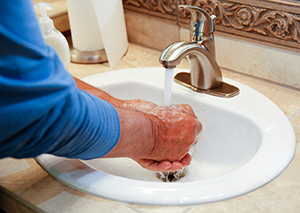It’s important to care for your central venous access device correctly. If you don’t, it may become infected. Then it can’t be used. The tube (catheter) will have to be removed and a new one placed in another vein. Your nurse will show you how to care for your access to help it last.
Follow these tips
-
Wash your hands often with soap and clean water.
-
Try not to touch the catheter. Anyone who needs to touch it should wash their hands first and wear new, disposable gloves.
-
Avoid pulling on the catheter.
-
Don't let anything (such as clothing) rub or pull on the catheter.
-
Don't get your catheter wet. Ask your care team for tips on how to shower or bathe.
-
Avoid using sharp items near the catheter site, such as scissors or safety pins.
Watching for problems
Contact your health care provider right away if you have any of these problems:
-
You see a break in the tubing.
-
The skin around your access bleeds, oozes, or becomes red or sore.
-
You have a fever of 100.4°F (38°C) or higher, or as directed by your provider.
-
The stitches (sutures) or dressing over the catheter become loose or the catheter falls out.
-
An arm becomes swollen or painful.
-
You have chest pain or tightness.
-
You have difficulty breathing.
Note
A central vein access is often used only for a short time. Take good care of it.
Health care provider: Nurse
Name _______________________________ Phone _______________________________
Name _______________________________ Phone _______________________________
Featured in



